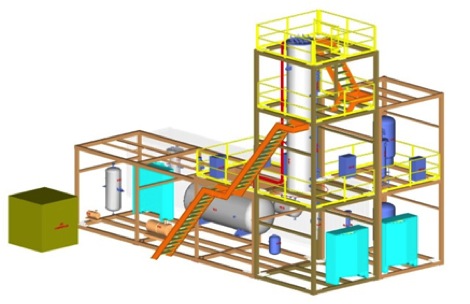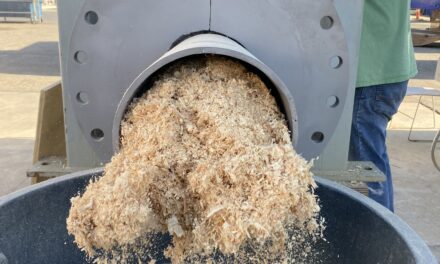Pulse detonation methods increase gas/solids mixing, enhancing thermo-catalytic conversion by improving mass and heat transfer. Ablation of the biomass feed after devolatilization maybe one of the most important observable effects. For example, at high temperature (1200oC), reaction kinetics for carbon with O2, H2O, and CO2 to form H2 + CO are “fast,” but mass and heat transfer limitations (due to particle size) slow the process into minutes and not fractions of a second, because biomass particles are structured carbon layers that form a highly insulating matrix. Biomass particles need to be “worked” aggressively to react quickly; rapid heating, ablation, and comminution of carbonaceous particles during biomass gasification are core elements of the innovation using acoustic power to intensify a gasification process. However, we expect that the most important destructive power (applied to biomass particles) will result from high/low pressure fluctuations caused by acoustic power inputs at 30 Hz that will help break the carbon/oxygen structural matrix. The innovation is expected to enable cost reductions, including lower biomass gasification hardware cost.[1] Simplicity, durability, and low-cost, are inherent advantages of the oxygen-fuel-water pulse detonation power system developed to generate supersonic shockwaves that attenuate into acoustic power used to intensify a gasification process.
[1] (Bellini, 2010)



